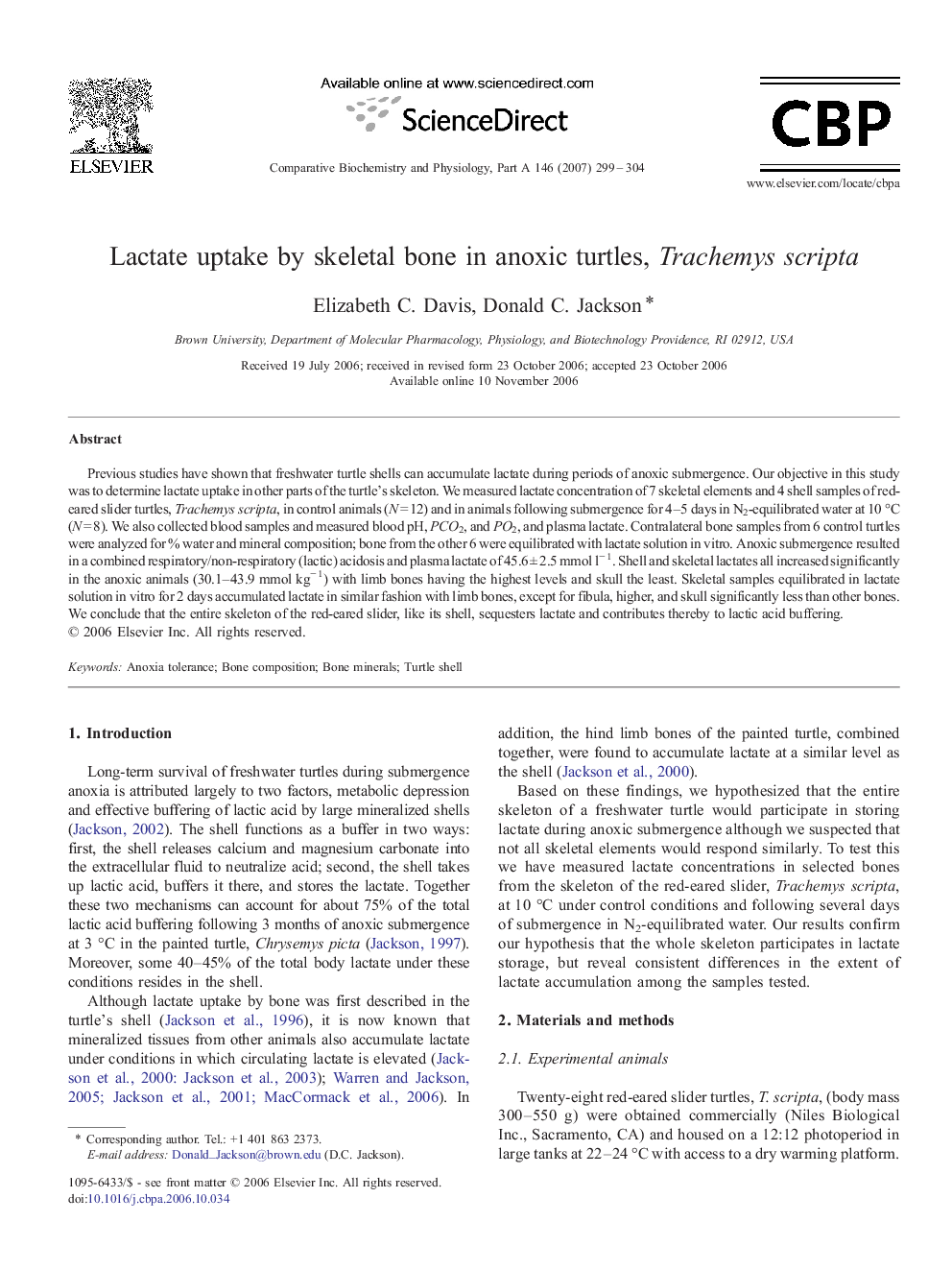| Article ID | Journal | Published Year | Pages | File Type |
|---|---|---|---|---|
| 1974550 | Comparative Biochemistry and Physiology Part A: Molecular & Integrative Physiology | 2007 | 6 Pages |
Abstract
Previous studies have shown that freshwater turtle shells can accumulate lactate during periods of anoxic submergence. Our objective in this study was to determine lactate uptake in other parts of the turtle's skeleton. We measured lactate concentration of 7 skeletal elements and 4 shell samples of red-eared slider turtles, Trachemys scripta, in control animals (N = 12) and in animals following submergence for 4-5 days in N2-equilibrated water at 10 °C (N = 8). We also collected blood samples and measured blood pH, PCO2, and PO2, and plasma lactate. Contralateral bone samples from 6 control turtles were analyzed for % water and mineral composition; bone from the other 6 were equilibrated with lactate solution in vitro. Anoxic submergence resulted in a combined respiratory/non-respiratory (lactic) acidosis and plasma lactate of 45.6 ± 2.5 mmol lâ 1. Shell and skeletal lactates all increased significantly in the anoxic animals (30.1-43.9 mmol kgâ 1) with limb bones having the highest levels and skull the least. Skeletal samples equilibrated in lactate solution in vitro for 2 days accumulated lactate in similar fashion with limb bones, except for fibula, higher, and skull significantly less than other bones. We conclude that the entire skeleton of the red-eared slider, like its shell, sequesters lactate and contributes thereby to lactic acid buffering.
Related Topics
Life Sciences
Biochemistry, Genetics and Molecular Biology
Biochemistry
Authors
Elizabeth C. Davis, Donald C. Jackson,
